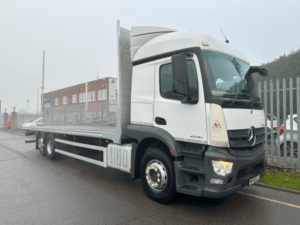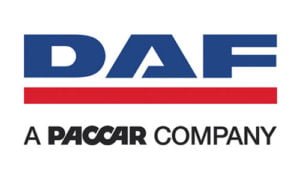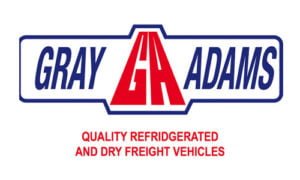SALES Newmains (Scotland)
SALES & EXPORT Wolverhampton
SALES Manchester
SALES Ipswich
Flatbed Rigid Trucks for Sale
2018 Mercedes-Benz 26t Converted Flatbed
Manufacturer: MERCEDES-BENZ
Year: 2018
Emission: Euro 6
Cab Type: Single Sleeper
Web Ref. No: 5990
Request information on:
2018 Mercedes-Benz 26t Converted Flatbed
Need financing?
Find out more about our leasing and financing options for rigid trucks.
Used Flatbed Trucks
Flatbed rigid trucks are built to handle loads that don’t fit in conventional enclosed bodies. If your operation requires transporting machinery, steel beams, building materials or large items that are bulky or irregular in shape, flatbeds offer both capacity and flexibility.
Flatbed lorries have open decks—no sides, no roof—allowing easy loading and unloading from the sides, rear, or even from above with a crane. This design simplifies logistics when handling large or awkward items. Structural rigidity ensures a flatbed or platform truck can carry heavy loads without compromise. With fewer enclosed parts, maintenance is often simpler, and turnaround times for loading/unloading tend to be much faster.
We stock flatbed rigs of varying weight classes and lengths, from smaller 7.5-tonnes units up to heavy 26-tonne examples. Optional features may include tie-down points (D-rings, stake pockets), crane or HIAB lifts, reinforced flooring, removable stakes, and flat body or drop-side deck-upgrades. We offer both manual and automatic transmission models, giving you the choice that suits your drivers and routes.
Flatbeds are typically used for construction, steelwork, sheet materials, timber, plant and machinery, precast concrete, and other heavy or oversized cargo that can tolerate exposure to the elements. They’re also useful in site work, landscaping, infrastructure and any operation where rapid loading and unloading is critical.
Talk to our specialists about the best flatbed rigid truck for your operation.
FAQs
What are the benefits of a flatbed truck?
Flatbeds allow you to carry heavy, large or uniquely shaped loads that won’t fit inside an enclosed body. Because they have no fixed sides or roof, loading is simpler, especially via crane or from the side. They also tend to reduce handling time, making them useful in construction, steelwork and other sectors needing fast turnaround.
What goods are typically transported on a flatbed?
Typical cargo includes steel beams, pipes, machinery, timber, precast concrete, plant equipment, and materials that are robust or can be secured and protected separately. You should avoid transporting goods that are fragile or sensitive to weather unless you can sheet or tarp them properly.
How do you secure loads on a flatbed truck?
Through tie-downs such as D-rings, stake pockets, chains or straps. Some trucks include fixed points or removable fittings. Proper load securing is essential both for safety and compliance with transport regulations.
Are flatbed trucks more expensive to maintain or insure?
Not necessarily more expensive, but they have specific requirements: securing equipment (straps, chains, stakes), regular checks of the deck and tie-down fittings, plus ensuring loads are properly sheeted if weather protection is needed. Insurance may factor in exposure and load risks, but with a well-specified vehicle and good usage, costs are manageable.
Can flatbed trucks be fitted with additional equipment like cranes or tail lifts?
Yes. Many flatbeds can be upgraded with hydraulic cranes (e.g. HIAB), tail lifts, drop sides, removable stakes, or even light tarpaulin covers. These options let you adapt the vehicle to different load types and improve usability on diverse jobs.









